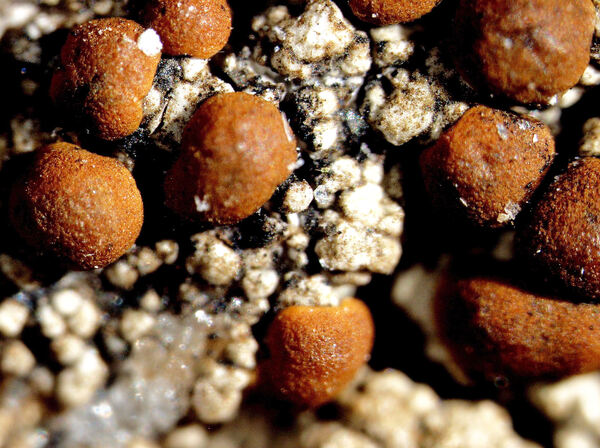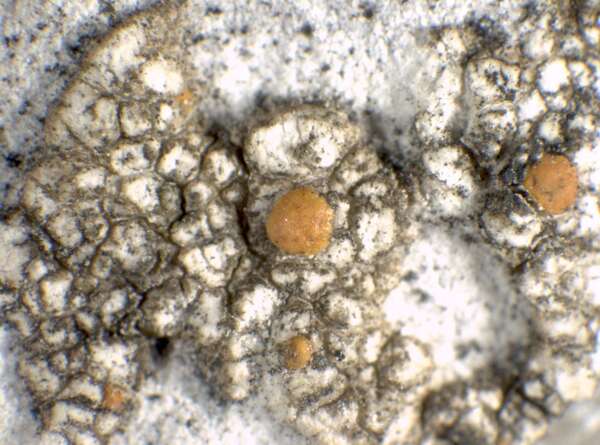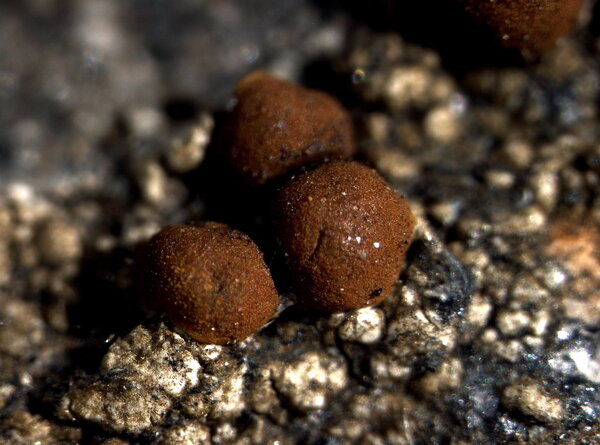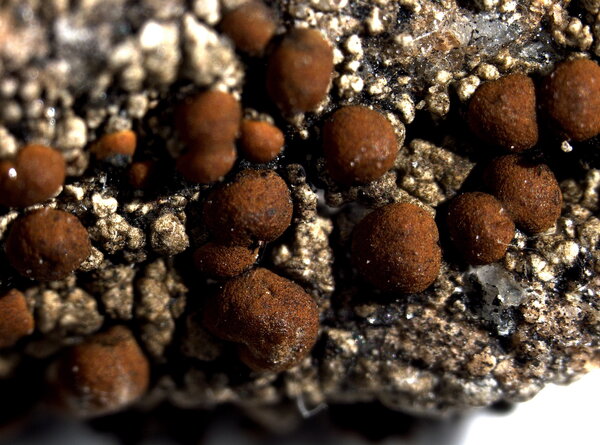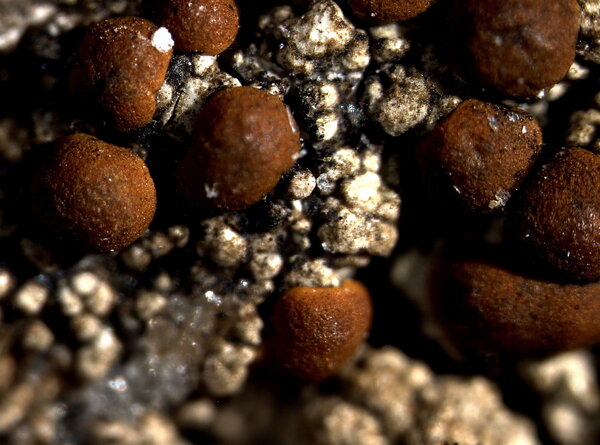Protoblastenia siebenhaariana (Körb.) J. Steiner var. siebenhaariana
Verh. K.K. zool.-bot. Ges. Wien, 61: 48, 1911. Basionym: Biatora siebenhaariana Körb. - Syst. Lich. Germ.: 207, 1855.
Synonyms: Blastenia siebenhaariana (Körb.) Lettau; Protoblastenia rupestris subsp. albida Asta & Cl. Roux; Protoblastenia rupestris subsp. siebenhaariana (Körb.) A.L. Sm.; Protoblastenia siebenhaariana (Körb.) J. Steiner; Protoblastenia siebenhaariana subsp. albida (Asta & Cl. Roux) Clauzade & Cl. Roux; Protoblastenia siebenhaariana var. alpina (Arnold) Clauzade & Cl. Roux?
Distribution: N - Frl, Ven (Nimis 1994, Nascimbene & Marini 2007, Nascimbene 2008c), TAA (Nascimbene & al. 2022), Lomb, Piem (TSB 34497), VA (Piervittori & Isocrono 1999), Emil (Tretiach & al. 2008, Fariselli & al. 2020), Lig. C - Tosc, Marc (Nimis & Tretiach 1999). S - Camp.
Description: Thallus crustose, episubstratic, rather thick, smooth to uneven, rimose to areolate, whitish to pale brown. Areoles smooth, contiguous, not imbricate, flat to weakly convex, up to 0.5 mm wide, forming a compact crust. Apothecia without a thalline margin, not constricted at base, 0.4-1.5(-2) mm across, with an orange to finally brown to dark brown, convex, smooth disc, and a very thin, soon excluded proper margin. Proper exciple poorly developed, of branched hyphae, colourless to orange-brown, patchily pigmented; epithecium orange-brown, 10-20 µm high, with granular crystals reacting K+ red; hymenium colourless to pale orange, 50-135 µm high, hemiamyloid; paraphyses coherent, sparingly branched and anastomosing, 2.5-4 µm thick, the apical cells hardly swollen, up to 5 µm wide; hypothecium brown or dark reddish brown, patchily pigmented. Asci 8-spored, elongate-clavate, with a thin, outer amyloid layer and a thickened tholus penetrated by a tube, the sides of which stain I/KI+ deep blue, Porpidia-type. Ascospores 1-celled, hyaline, ellipsoid to ovoid, thin-walled, (6-)9-13(-15) x (3-)5-7(-8) µm, without a distinct perispore. Photobiont chlorococcoid. Spot tests: thallus K-, C-, KC-, P-; apothecia K+ red. Chemistry: apothecia with anthraquinones, mainly parietin. Note: a mainly arctic-alpine, probably circumpolar lichen found on base-rich or calciferous siliceous rocks and on dolomite in upland areas; not frequent in Italy, but locally common. The var. alpina (Arnold) Clauzade & Cl. Roux (Biatora rupestris var. alpina Arnold) perhaps does not belong to this taxon.
Growth form: Crustose
Substrata: rocks
Photobiont: green algae other than Trentepohlia
Reproductive strategy: mainly sexual
Commonnes-rarity: (info)
Alpine belt: rather rare
Subalpine belt: rare
Oromediterranean belt: extremely rare
Montane belt: extremely rare
Submediterranean belt: absent
Padanian area: absent
Humid submediterranean belt: absent
Humid mediterranean belt: absent
Dry mediterranean belt: absent
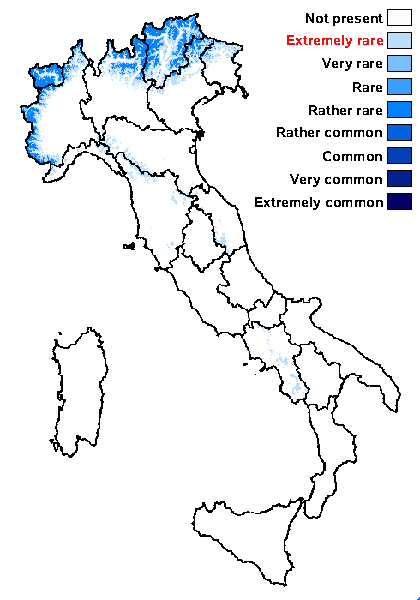
Predictive model
Herbarium samples
Growth form: Crustose
Substrata: rocks
Photobiont: green algae other than Trentepohlia
Reproductive strategy: mainly sexual
Commonnes-rarity: (info)
Alpine belt: rather rare
Subalpine belt: rare
Oromediterranean belt: extremely rare
Montane belt: extremely rare
Submediterranean belt: absent
Padanian area: absent
Humid submediterranean belt: absent
Humid mediterranean belt: absent
Dry mediterranean belt: absent

Predictive model
| Herbarium samples |
 Index Fungorum
Index Fungorum
 GBIF
GBIF
